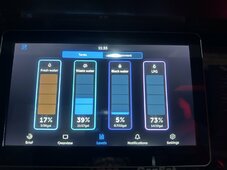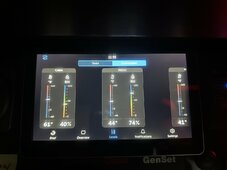Buzz Lighting
New Member
I’m using a second SeeLevel II monitor that is tied to the Cerob GX via a RV-C to VE Can adapter cable. The SeeLevel II monitor needs to be the 709-N2KNLP (NMEA200) version for it to work with the Cerbo. For the LPG tank reading, I’m using a Mopeka LPG Tank sensor via bluetooth to the Cerbo. Temp monitors are also via bluetooth and I’m using the Ruuvi Tags for that. Initially a headache to setup as I’m using two SeeLevel II monitors. The main one is bluetooth enabled with an app which helps out to have when dumping the tanks so I did not want to get rid of it and they don’t make one with both bluetooth and RV-C. I had to contact Garnett the manufacturer which they were quite helpful and showed me how to set up the RV-C one as the primary and the bluetooth one as the secondary. If you’re only installing one then you’re good. One thing too note is that when running the grounds and sender wires, try to avoid running them along or attach them any 120 AC wires as they will interfere and throw off the values on the tank readings.What are you using for tank sensing that works with the Cerbo? I have a Cerbo Tank and bought some ultrasonic sensors that are supposed to be compatible with the Tank but they didn't work.
Below is a great write up on how to do it. You can buy the kit from them if you want but I didn’t. I bought my SeeLevel II from an RV supply house and made my own cable which is a PITA to do so I would just buy one made.
https://www.vanlifeoutfitters.com/using-seelevel-tank-monitoring-with-a-victron-energy-cerbo-gx/
Now, I’m still undecided if I leave my GuiMods with all the available info on the screen that I’ve become accustomed to or Victron’s streamlined new firmware look as I’m really liking it too.




